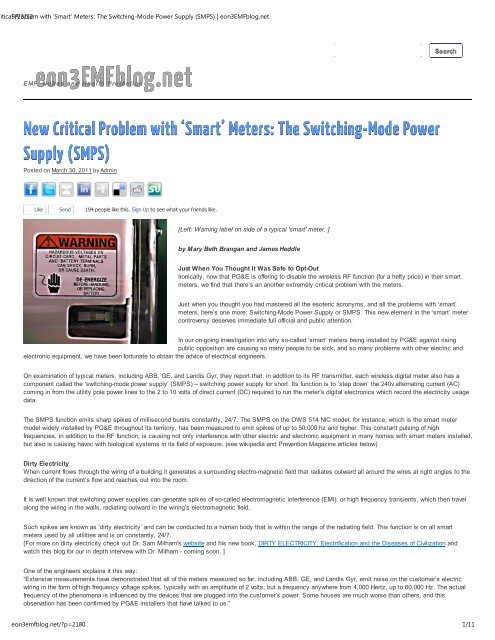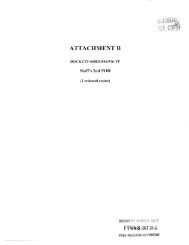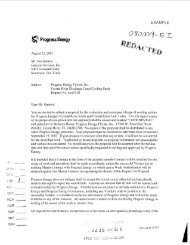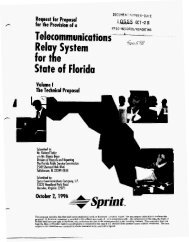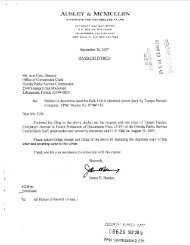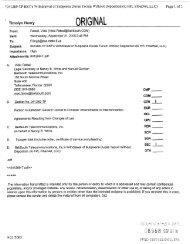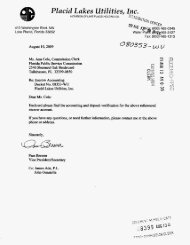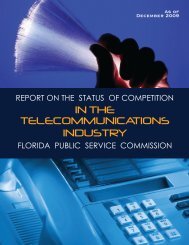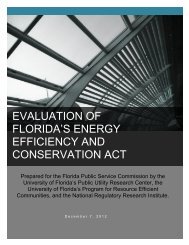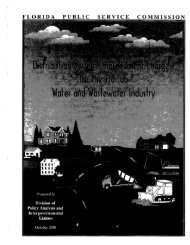Smart Meters - Public Service Commission
Smart Meters - Public Service Commission
Smart Meters - Public Service Commission
Create successful ePaper yourself
Turn your PDF publications into a flip-book with our unique Google optimized e-Paper software.
itical 9/23/12 Problem with ‘<strong>Smart</strong>’ <strong>Meters</strong>: The Switching-Mode Power Supply (SMPS) | eon3EMFblog.net<br />
eon3EMFblog.net<br />
E MF , N u k e s a n d H e a l t h P r o t e c t i o n<br />
Search<br />
New Critical Problem with ‘<strong>Smart</strong>’ <strong>Meters</strong>: The Switching-Mode Power<br />
Supply (SMPS)<br />
Posted on March 30, 2011 by Admin<br />
Like Send 194 people like this. Sign Up to see what your friends like.<br />
[Left: Warning label on side of a typical 'smart' meter. ]<br />
by Mary Beth Brangan and James Heddle<br />
Just When You Thought It Was Safe to Opt-Out<br />
Ironically, now that PG&E is offering to disable the wireless RF function (for a hefty price) in their smart<br />
meters, we find that there’s an another extremely critical problem with the meters.<br />
Just when you thought you had mastered all the esoteric acronyms, and all the problems with ‘smart’<br />
meters, here’s one more: Switching-Mode Power Supply or SMPS. This new element in the ‘smart’ meter<br />
controversy deserves immediate full official and public attention.<br />
In our on-going investigation into why so-called ‘smart’ meters being installed by PG&E against rising<br />
public opposition are causing so many people to be sick, and so many problems with other electric and<br />
electronic equipment, we have been fortunate to obtain the advice of electrical engineers.<br />
On examination of typical meters, including ABB, GE, and Landis Gyr, they report that, in addition to its RF transmitter, each wireless digital meter also has a<br />
component called the ‘switching-mode power supply’ (SMPS) – switching power supply for short. Its function is to ‘step down’ the 240v alternating current (AC)<br />
coming in from the utility pole power lines to the 2 to 10 volts of direct current (DC) required to run the meter’s digital electronics which record the electricity usage<br />
data.<br />
The SMPS function emits sharp spikes of millisecond bursts constantly, 24/7. The SMPS on the OWS 514 NIC model, for instance, which is the smart meter<br />
model widely installed by PG&E throughout its territory, has been measured to emit spikes of up to 50,000 hz and higher. This constant pulsing of high<br />
frequencies, in addition to the RF function, is causing not only interference with other electric and electronic equipment in many homes with smart meters installed,<br />
but also is causing havoc with biological systems in its field of exposure. (see wikipedia and Prevention Magazine articles below)<br />
Dirty Electricity<br />
When current flows through the wiring of a building it generates a surrounding electro-magnetic field that radiates outward all around the wires at right angles to the<br />
direction of the current’s flow and reaches out into the room.<br />
It is well known that switching power supplies can generate spikes of so-called electromagnetic interference (EMI), or high frequency transients, which then travel<br />
along the wiring in the walls, radiating outward in the wiring’s electromagnetic field.<br />
Such spikes are known as ‘dirty electricity’ and can be conducted to a human body that is within the range of the radiating field. This function is on all smart<br />
meters used by all utilities and is on constantly, 24/7.<br />
[For more on dirty electricity check out Dr. Sam Milham's website and his new book, DIRTY ELECTRICITY: Electrification and the Diseases of Civilization and<br />
watch this blog for our in depth interview with Dr. Milham - coming soon. ]<br />
One of the engineers explains it this way:<br />
“Extensive measurements have demonstrated that all of the meters measured so far, including ABB, GE, and Landis Gyr, emit noise on the customer’s electric<br />
wiring in the form of high frequency voltage spikes, typically with an amplitude of 2 volts, but a frequency anywhere from 4,000 Hertz, up to 60,000 Hz. The actual<br />
frequency of the phenomena is influenced by the devices that are plugged into the customer’s power. Some houses are much worse than others, and this<br />
observation has been confirmed by PG&E installers that have talked to us.”<br />
eon3emfblog.net/?p=2180<br />
1/11


